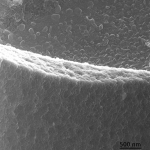Alkali-Activated Materials

Alkali-activated materials are low-CO2 alternatives to ordinary Portland cement-based concretes. These systems use aluminosilicate-rich earth materials (calcined clays such as metakaolin) or industry by-products (ground granulated blast furnace slag and/or coal-derived fly ash) as the main constituents and do not contain any OPC powder in mix designs. By alkali-activating the aluminosilicate and calcium precursors using hydroxide, silicate and/or carbonate-based activators, the resulting systems possess similar mechanical performance to OPC-based systems at a much reduced CO2 cost to the environment.
Current research in the group is focused on understanding the durability of these materials, specifically the chemical mechanisms controlling long-term degradation in certain aggressive environments (e.g., sulfates, CO2). Furthermore, short-term durability issues, such as drying-induced microcracking, are being investigated from a fundamental chemistry/physics viewpoint, with potential mitigation avenues being explored in the lab.
Carbonate Materials
Carbon sequestration is an area of research to address the increasing amounts of CO2 being released into the atmosphere. One aspect of this technology involves injecting CO2 into depleted geological formations so that the CO2 molecules react with existing phases to form stable mineral compounds. Other technologies include sequestering CO2 above ground, such as via minerals carbonation. Therefore, understanding materials containing carbonate phases (various forms of CO3) is of relevance for carbon storage, including cementitious materials that come in contact with CO2 during the sequestration stage. SCG is investigating the disordered carbonate phases that can develop in alkali-activated materials when exposed to elevated CO2 levels, and has shown that the development of ‘stable’ amorphous carbonates is linked with a lower extent of binder (cement) degradation.

